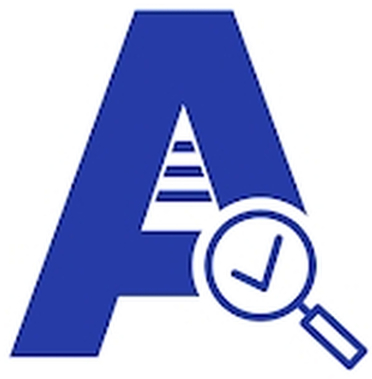Perform Factory Housekeeping Inspection using eAuditor
Factory Housekeeping refers to the systematic practice of maintaining cleanliness, orderliness, and safety within a factory environment to ensure smooth operations, worker well-being, and compliance with regulatory standards. It involves organized methods of waste disposal, cleaning of equipment and work areas, proper storage of materials, and ensuring clear access to pathways and emergency exits.

Performing Factory Housekeeping Inspection using eAuditor ensures a structured, detailed, and highly efficient evaluation of workplace cleanliness, organization, and safety. This digital approach goes beyond surface-level cleaning checks and instead focuses on embedding systematic housekeeping practices into daily factory operations. The ultimate goal is to maintain a safe, hazard-free, and compliant workplace that boosts both worker well-being and operational efficiency.
-
Purpose of Factory Housekeeping Inspection
Factory housekeeping is not just about cleaning—it is about safety, compliance, and productivity. Performing inspections with eAuditor achieves the following:
- Risk Reduction: Identifies hazards such as slippery floors, oil spills, loose wires, or blocked exits that could lead to accidents.
- Regulatory Compliance: Ensures the workplace meets OSHA, ISO, or local government housekeeping and safety standards.
- Operational Efficiency: Organized materials and clutter-free workstations reduce delays and downtime.
- Employee Morale & Health: Clean, hygienic, and well-maintained workspaces promote a positive and productive work culture.
- Sustainability: Supports eco-friendly practices by monitoring proper waste segregation and recycling.
-
Scope of the Inspection
The scope should cover all functional areas of the factory, ensuring that no aspect of housekeeping is overlooked:
- Production Floors
- Cleanliness of machinery areas, conveyor belts, assembly lines, and operator stations.
- Removal of oil, dust, and debris to prevent hazards and product contamination.
- Storage & Warehousing
- Safe and organized stacking of raw materials and finished goods.
- Secure handling and storage of hazardous materials.
- Clear labeling and access to tools and spare parts.
- Waste Handling & Disposal Areas
- Segregation of recyclable, general, and hazardous waste.
- Safe storage of chemical waste before disposal.
- Availability of bins at designated areas.
- Utility & Maintenance Areas
- Workshops and equipment areas kept free of clutter.
- Tools stored in designated racks.
- Power rooms maintained in a dust-free and safe condition.
- Common Areas
- Washrooms, canteens, and changing rooms maintained in hygienic conditions.
- Drinking water stations kept clean and regularly sanitized.
- Emergency Routes & Safety Equipment
- Fire extinguishers accessible and not blocked.
- Aisles and walkways clear at all times.
- Exit signage visible and emergency lights functioning.
-
Using eAuditor for Factory Housekeeping
3.1 Pre-Inspection Setup
- Design a custom checklist in eAuditor that covers cleaning, storage, waste management, emergency access, and compliance points.
- Define inspection frequency (daily, weekly, or monthly) based on factory operations.
- Set scoring methods (Pass/Fail, Ratings, or Weighted Scores) to quantify performance.

3.2 On-Site Digital Inspection
- Inspectors use mobile devices to record findings, ensuring speed and accuracy.
- Capture photos or videos of issues such as cluttered walkways, poor waste management, or dirty work areas.
- Record voice notes for complex observations.
- Use GPS and time stamps to validate inspection authenticity.
3.3 Core Housekeeping Audit Focus
- Work Area Cleanliness: Floors swept, spills cleaned, no debris accumulation.
- Material Storage: No over-stacking, items labeled, and aisles unblocked.
- Waste Management: Proper bins available, segregation followed, no overflow.
- Machinery Areas: Equipment free of dust/oil, clean surroundings.
- Safety & Emergency Zones: Fire exits open, extinguishers visible, signage in place.
- Employee Facilities: Toilets, break areas, and canteens cleaned daily.
3.4 Post-Inspection Workflow
- Automatic Report Generation: A professional report with photographs, notes, and ratings is created instantly.
- CAPA Assignment: Corrective and Preventive Actions (CAPA) can be assigned immediately, with clear deadlines and accountability.
- Trend Analysis: eAuditor stores historical data for trend reports, highlighting recurring housekeeping problems.
- Escalation & Notifications: Management gets real-time alerts on critical issues like blocked fire exits or hazardous waste mismanagement.
-
Benefits of Using eAuditor for Housekeeping
- Real-Time Insights: Managers are updated instantly with inspection results.
- Improved Compliance: Digital records serve as proof of compliance for audits.
- Efficiency Gains: Eliminates paperwork and reduces time spent preparing reports.
- Employee Accountability: CAPA tracking ensures issues are resolved, not ignored.
- Continuous Improvement: Analytics highlight recurring gaps for long-term solutions.
- Safety Enhancement: Ensures risks from poor housekeeping are proactively addressed.

-
Example Checklist Sections in eAuditor
A Factory Housekeeping Checklist may include the following categories:
- Floors free from oil, dust, debris, and obstructions.
- Tools and raw materials stored neatly in assigned locations.
- Proper bins for hazardous, recyclable, and general waste.
- Fire exits, extinguishers, and pathways unobstructed.
- Washrooms and canteens cleaned and disinfected regularly.
- Adequate lighting and ventilation maintained.
-
Summary
Performing Factory Housekeeping Inspection using eAuditor ensures that factories maintain a clean, safe, and compliant work environment. By digitizing inspections, companies can streamline reporting, assign corrective actions instantly, and build long-term housekeeping improvements through data-driven insights. This proactive approach strengthens compliance, enhances efficiency, prevents accidents, and promotes a culture of orderliness across the facility.


